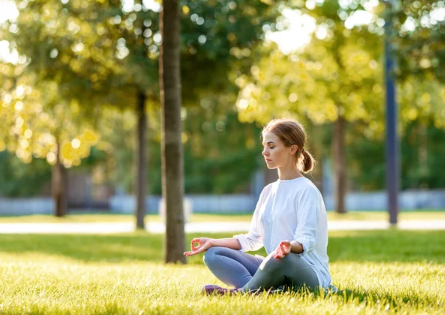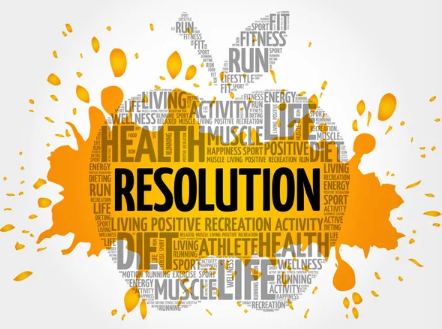Meditation for beginners can feel like a challenge, especially in today’s hyper-connected, constantly stimulated world. Our minds are rarely still—we’re juggling notifications, deadlines, endless to-do lists, personal responsibilities, and the silent pressure to always stay “on.” This mental noise builds up quietly, leaving us feeling drained—not just physically, but emotionally and mentally as well. It’s no wonder that so many people are now turning to meditation as a way to find clarity, peace, and inner balance.
But here’s the truth: for many people, especially those new to the practice, meditation for beginners can feel intimidating. You might think it requires sitting still for long periods, shutting off your thoughts completely, or achieving some state of perfect zen. In reality, none of those things are necessary. Meditation for beginners isn’t about becoming someone else—it’s about becoming more fully present with yourself.For those just starting out, resources like Headspace’s beginner meditation guide can help you get familiar with simple breathing techniques and mindful awareness.
You don’t need to retreat to a mountain or have a silent, candle-lit room to begin. You don’t need special music or expensive tools. All you really need is the willingness to pause. At its core, meditation for beginners is about noticing. It’s about tuning in instead of zoning out, observing instead of reacting. Whether you’re sitting on your couch, taking a mindful walk, or closing your eyes for 60 seconds at your desk, you’re already on the path.
The beauty of meditation for beginners is that it meets you where you are. You can start with just one minute a day. One breath. One moment of stillness. Over time, that moment expands. Your mind becomes less chaotic. Your reactions soften. Your awareness grows. And most importantly, your sense of control returns—not over everything around you, but over how you respond to it.
It’s okay if your thoughts wander. That’s part of the process. The goal isn’t to be thought-free, but to become thought-aware. The more you practice, the easier it becomes to find that quiet space within yourself. The practice of meditation for beginners is just that—a practice. One that builds gradually, compassionately, and in tune with your own pace.
So if you’ve been thinking about trying meditation but feel unsure, just remember: you don’t need to be perfect. You just need to begin.
Why Meditation Matters in Everyday Life

Meditation has moved from ancient spiritual practice into the mainstream of health and wellness—and for good reason. Backed by studies from institutions like the World Economic Forum and Brown Health, even a few minutes of daily mindfulness can lower cortisol levels, reduce anxiety, improve focus, enhance sleep, and increase emotional resilience.
Practicing meditation consistently has been linked to:
Lower stress and anxiety
Improved mental clarity and concentration
Better sleep quality and reduced insomnia
Stronger emotional balance
Reduced symptoms of depression
Increased patience and self-awareness
Even for complete beginners, mindfulness meditation can have an immediate calming effect and long-term physical and emotional benefits.
Table of Contents
ToggleYou Don’t Need to Sit Still for Hours
One of the biggest myths about meditation is that you must sit cross-legged in silence for long periods. In truth, meditation for beginners should feel approachable and flexible. You can meditate sitting in a chair, lying down, or even while walking.
The goal is not to silence your thoughts, but to observe them without judgment. As your awareness grows, so does your ability to pause before reacting, focus better, and manage emotions more skillfully.
Getting Started: Beginner-Friendly Meditation Techniques
If you’re new to mindfulness and struggle with racing thoughts or restlessness, here are some gentle and effective ways to begin.
1. Start with 5-Minute Guided Sessions
Using meditation apps like Calm, Insight Timer, or Headspace makes the process simple. A soothing voice guides you through the practice, helping you stay present. These are perfect for anyone who finds silence uncomfortable or overwhelming.
2. Try Box Breathing (Also Called Four-Square Breathing)
This technique involves inhaling for 4 seconds, holding for 4, exhaling for 4, and holding again for 4. It calms the nervous system, improves oxygen flow, and anchors your attention. This method is widely used by athletes, professionals, and even military personnel to manage stress.
3. Walking Meditation
If sitting still is hard, try meditating while walking slowly in a quiet place. Focus on your steps, breath, and surroundings. Pay attention to the feeling of your feet touching the ground and the rhythm of your movements. This active form of meditation still builds mindfulness without requiring stillness.
4. Gratitude Journaling
Meditation isn’t limited to breath and stillness. Writing down three things you’re grateful for each evening shifts your mental state from stress to reflection and builds emotional wellness. This form of awareness is part of mindful living.
What the Science Says About Daily Mindfulness
According to studies published by The Times of India, New York Post, and Abbott, consistent mindfulness—even in short sessions—can:
Lower heart rate and blood pressure
Reduce inflammation markers in the body
Enhance cognitive performance and memory
Promote emotional regulation and better decision-making
Most importantly, these effects are not limited to long-term practitioners. Beginners experience benefits within days or weeks of consistent practice, especially when paired with other healthy habits.
How to Make Meditation a Habit That Sticks
Starting is easier than sticking with it. Here’s how to integrate meditation into your lifestyle:
Set a trigger: Link meditation to a daily habit, like right after brushing your teeth or before sleeping.
Keep it short: Start with just 3–5 minutes a day. You can always build up later.
Create a space: Use a quiet corner with a cushion, chair, or soft lighting that signals “pause time.”
Track your practice: Use a simple habit tracker or journal to monitor your consistency.
Let go of perfection: Some days your mind will wander a lot. That’s okay. The key is to show up.
Meditation Is for Everyone—Not Just the Calm and Collected
If you feel like you can’t sit still, if your mind won’t stop racing, if the idea of meditation feels silly or too slow—that’s exactly why you should try it.
This practice is especially powerful for people who are busy, stressed, overwhelmed, or struggling to be present. In just a few minutes a day, you can create space for yourself. That space becomes clarity, calm, and better choices. Meditation helps prepare your mind for deep rest by quieting mental noise and reducing overstimulation. If you’re struggling with restless nights, explore our guide on the theory about sleep to understand how better sleep supports mental clarity.
Whether you begin with a guided session, deep breathing, or mindful journaling, every step you take builds mental resilience, emotional strength, and a healthier mind-body connection.
You don’t need a special mat, a silent room, or a clear mind. You just need to begin—right where you are.


2 thoughts on “Meditation for Beginners (Even If You Can’t Sit Still)”